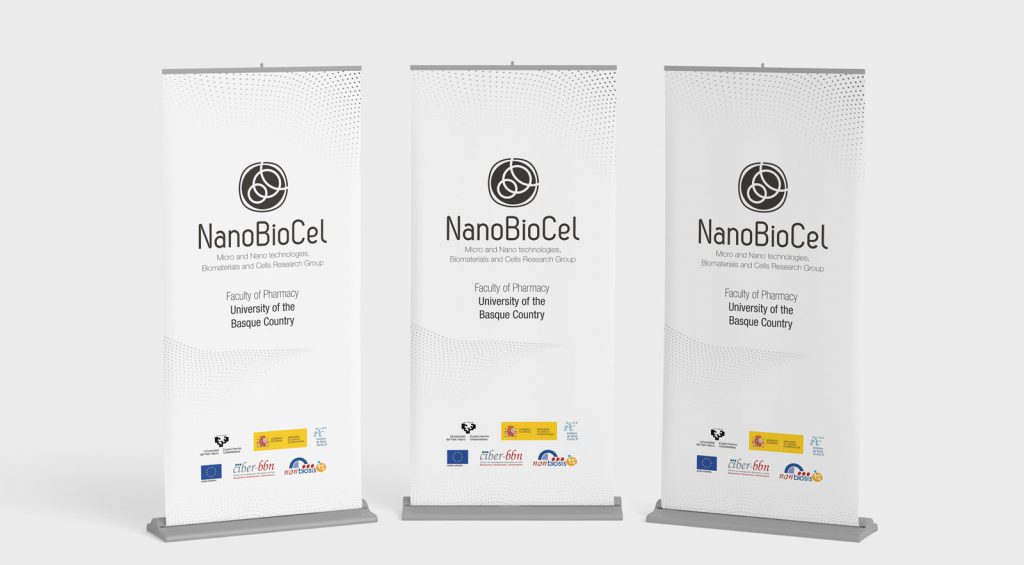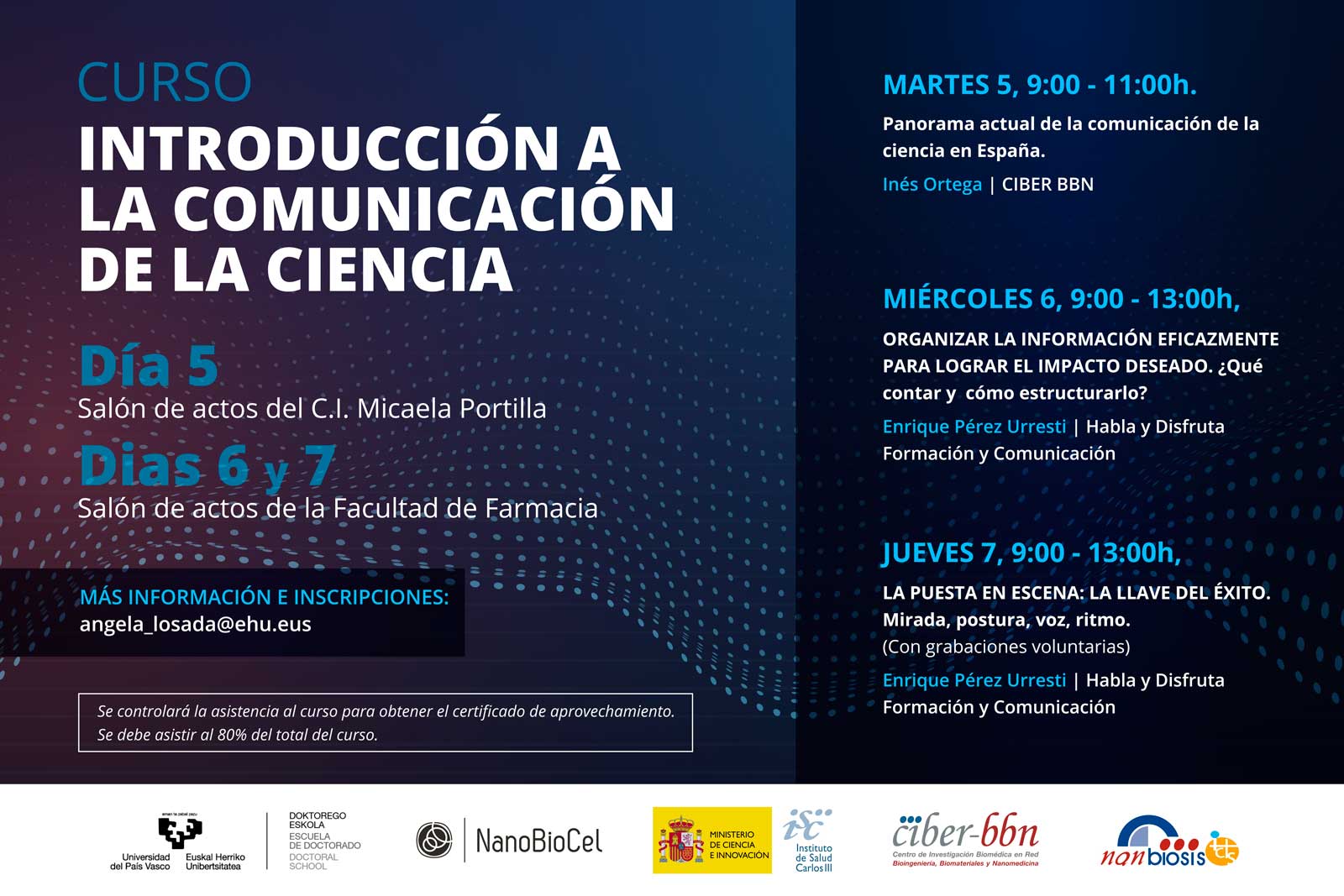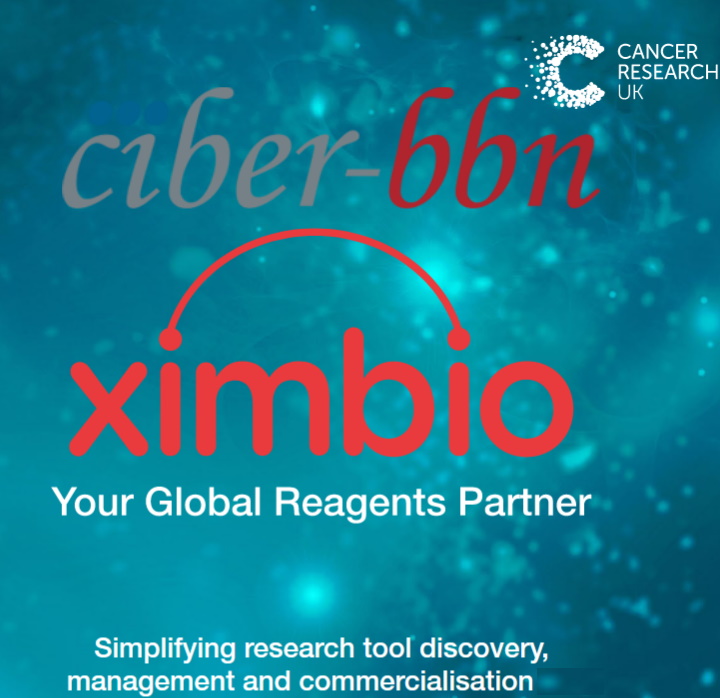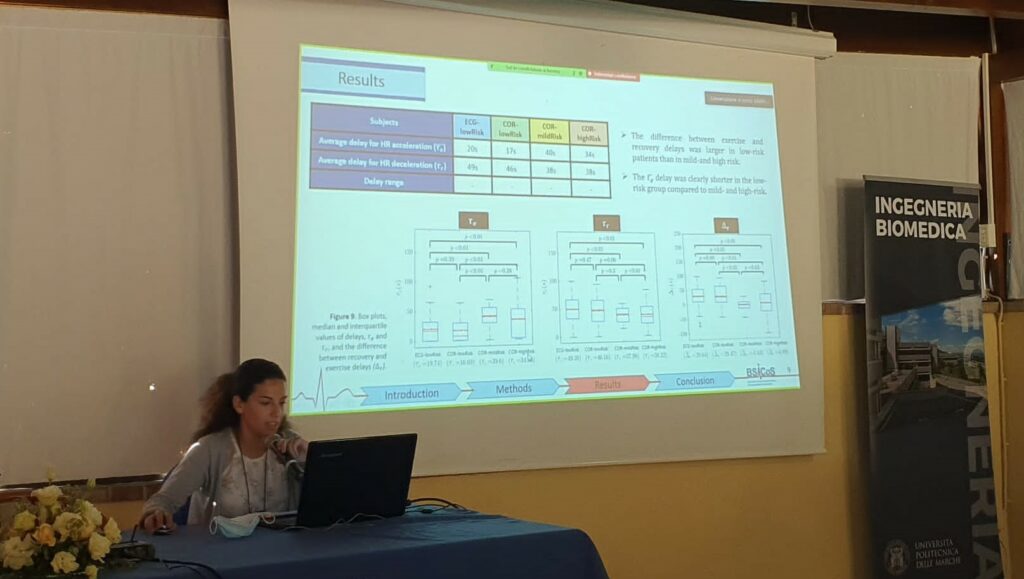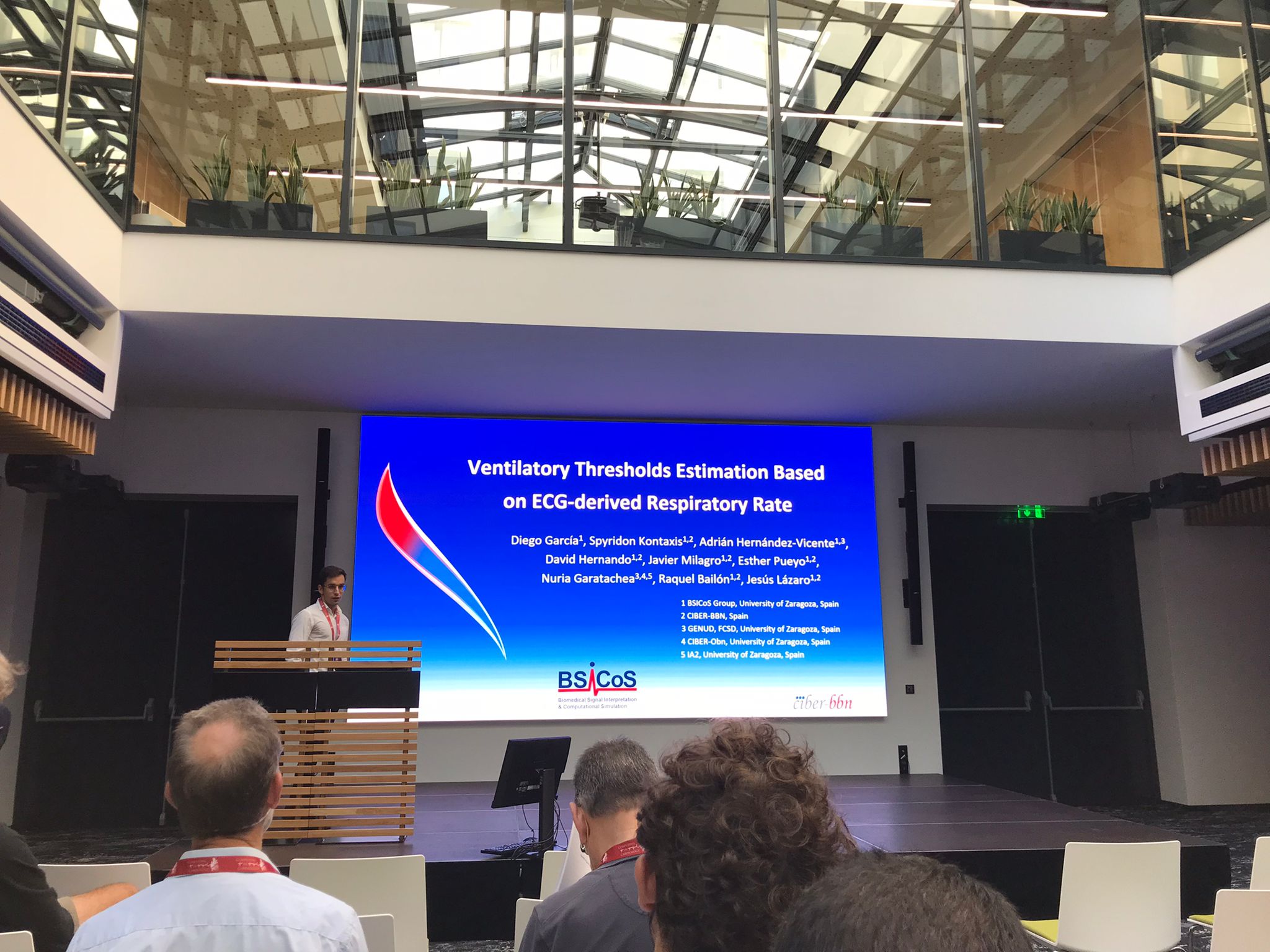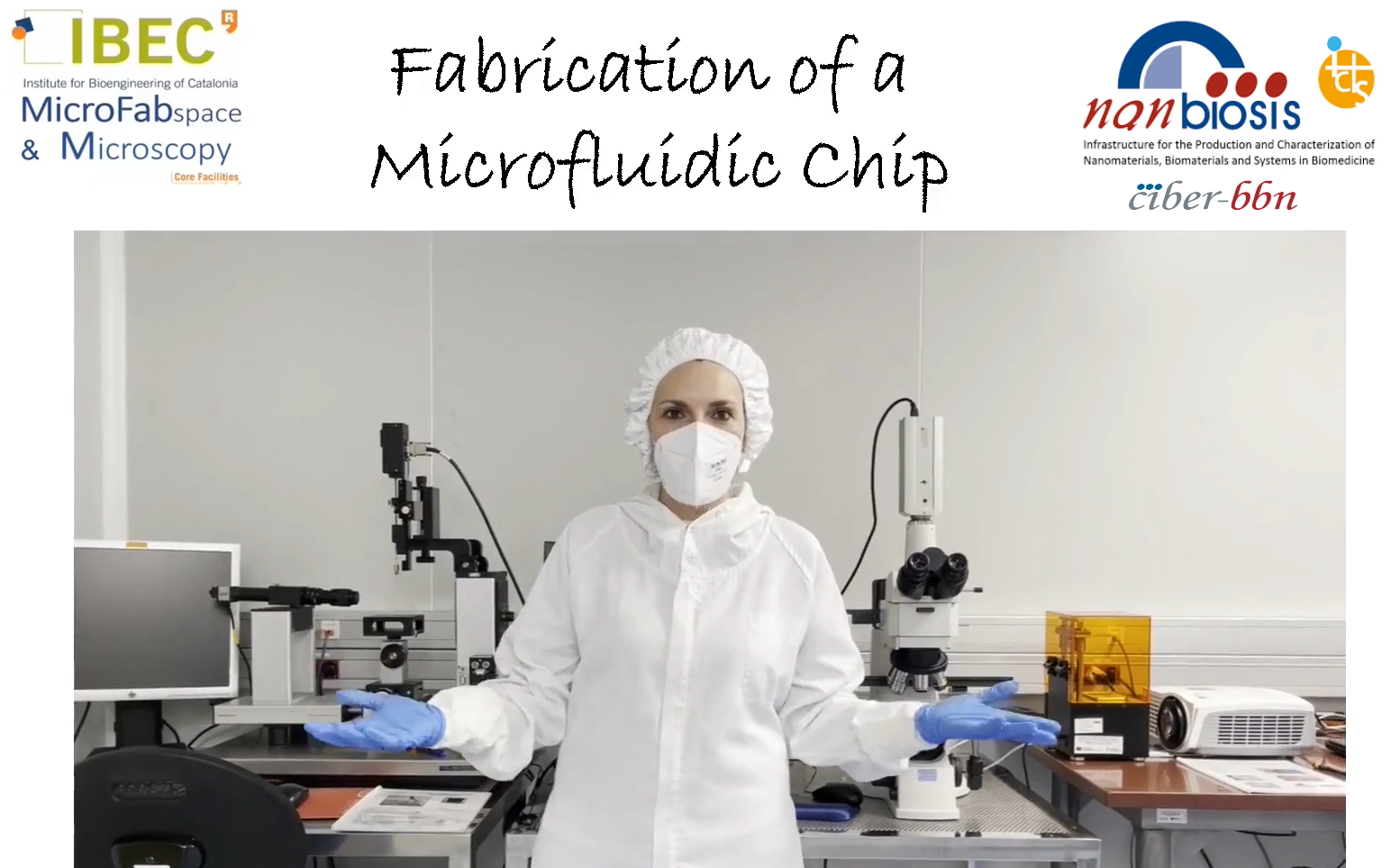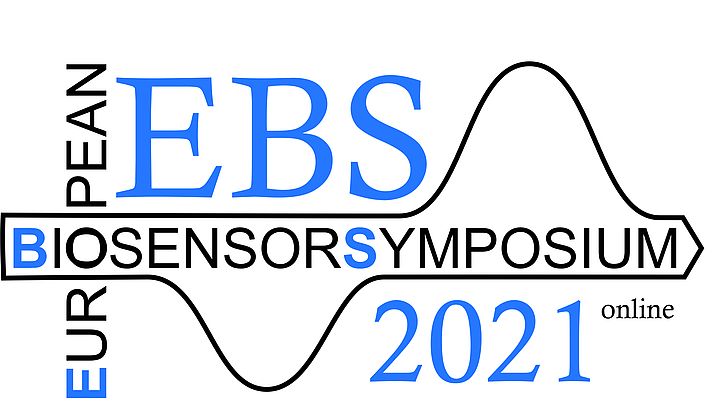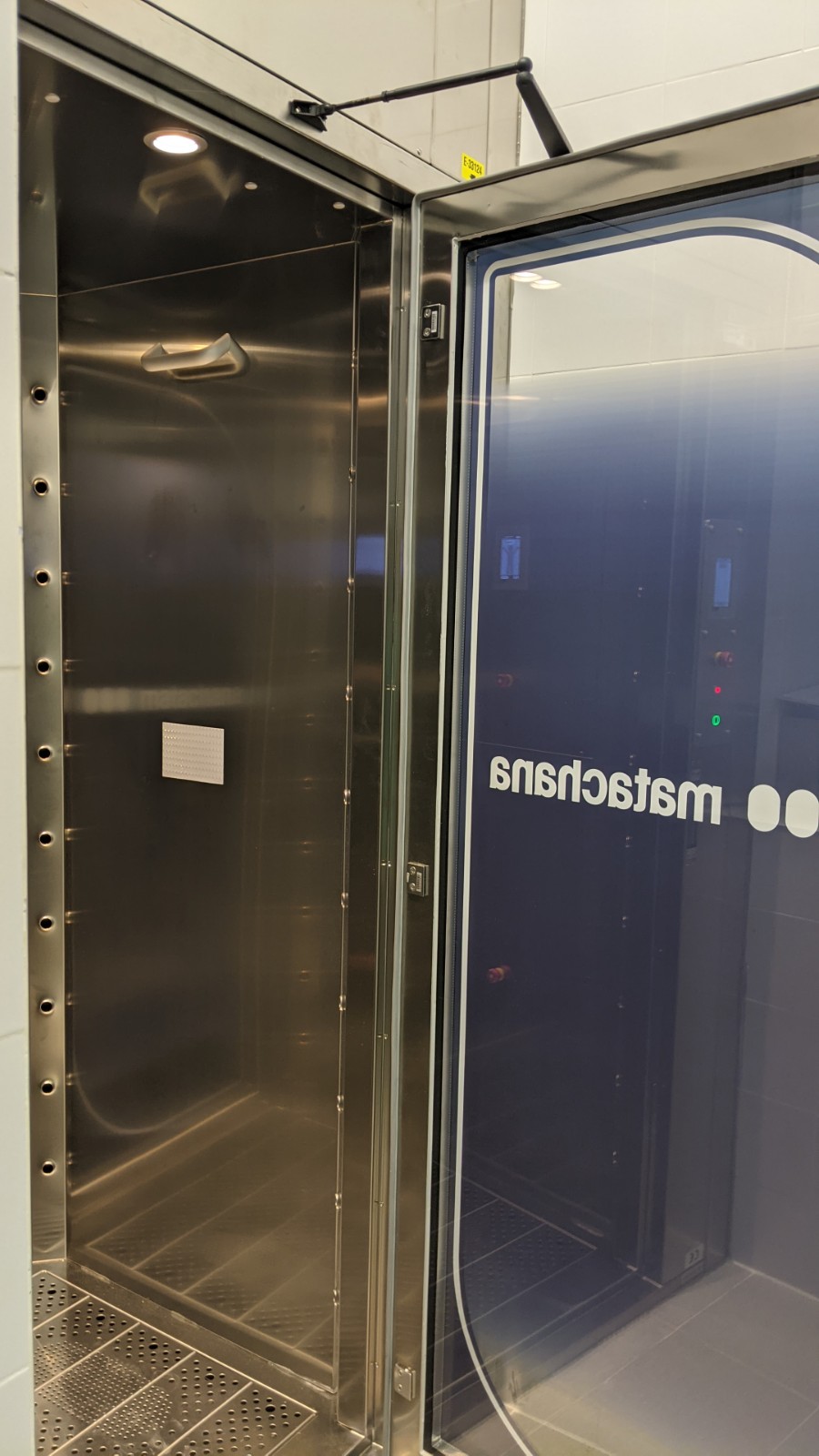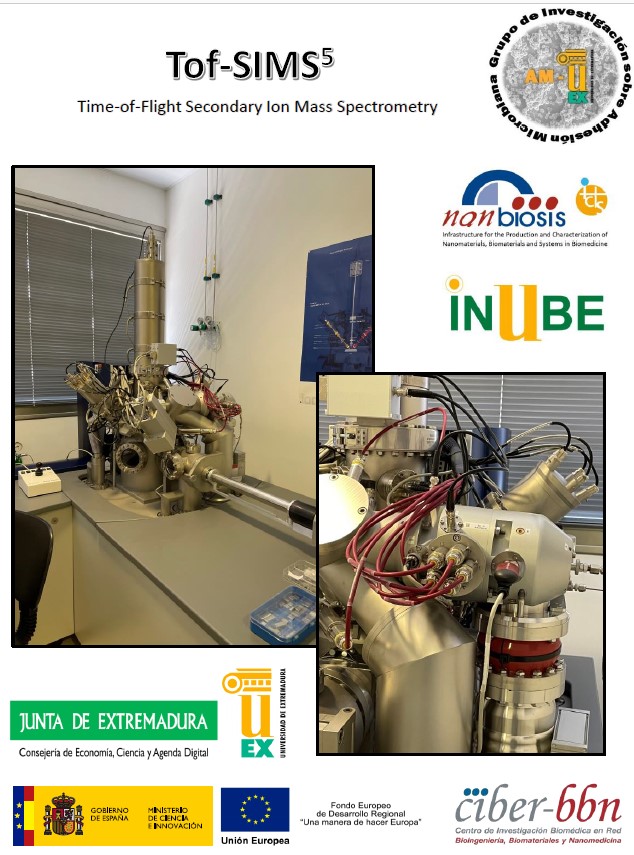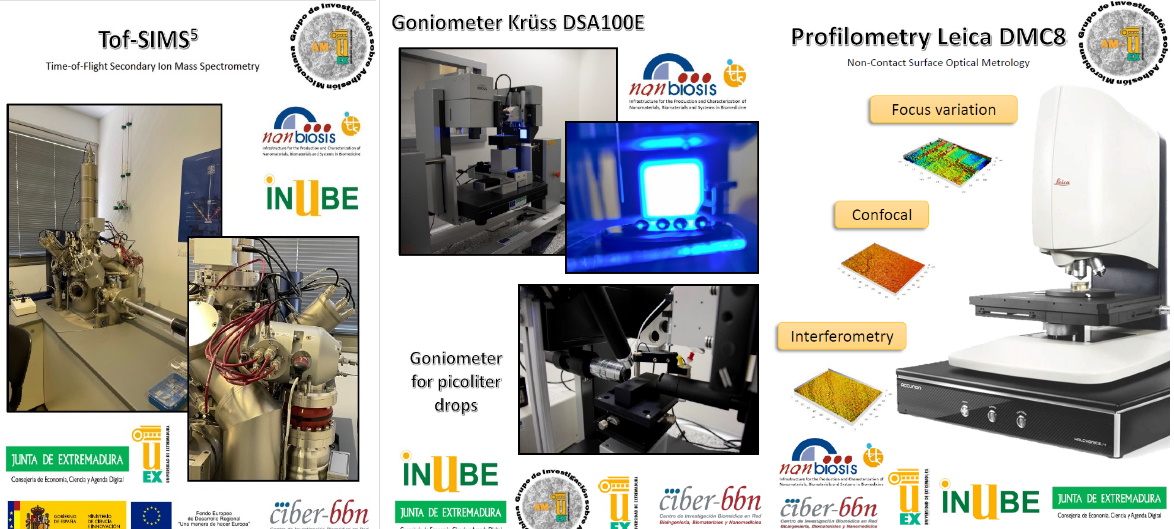Scientific Communication course
We want to invite you to a practical and short course of Introduction to Scientific Communication organized by CIBER-BBN and NanoBioCellGroup – NANBIOSIS U10 Drug Formulation Unit. The course will take place on the 5th (two hours from 9:00 am to 11:00 am) 6 and October 7 (4 hours from 9:00 a.m. to 1:00 p.m.) .-
The covid-19 pandemic has revealed the immense need to bring the world of science closer to citizens, so we are going to work on this soft skill through this course.
We have invited Inés Ortega, scientific communicator of the CIBER BBN, who will talk to us about how the dissemination activities score at the curricular level in the career of the research staff and will also address the issue of the Units of Scientific Culture (which are the intermediaries between the institutions and the citizenship to promote scientific culture). At the UPV / EHU through Euskampus Fundazioa, he will also talk about different tools to reach society. We will also have Dr. Enrique Pérez, an expert in communication and body language, with whom we will do a practical workshop on the construction of the story (for example, how to explain a scientific project to the general public) and the work of the staging.
